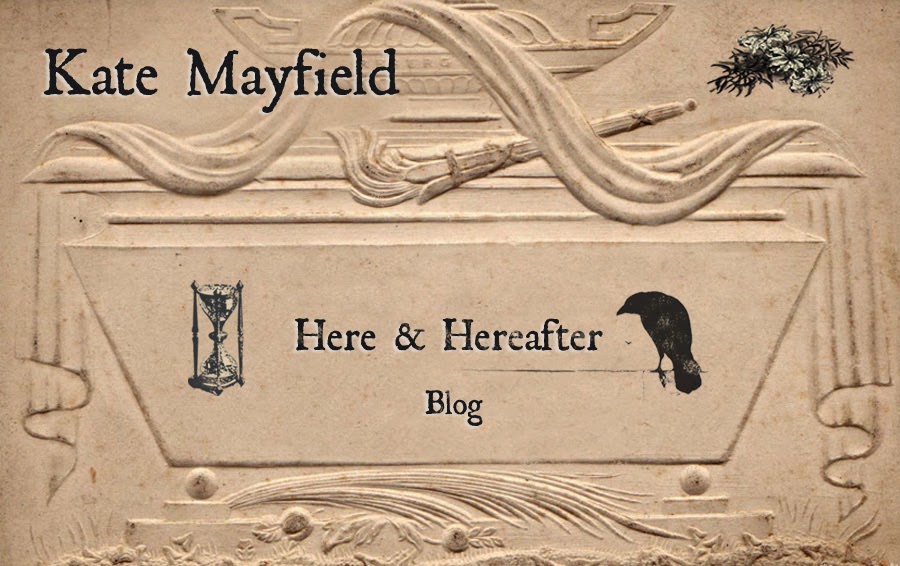THE STORY OF THE BRONZE CASKET
Rarely has a piece of funereal furniture caused more
controversy than in the remarkable journey of a particular bronze casket.
My education in caskets began at an early age. There are all
sorts today, and even in days of yore when there weren’t all sorts, there were
choices. At the time my father owned his funeral home there were obvious
differences between a coffin and a casket; a coffin was made solely of wood and
shaped similarly to the human body, narrowing at the head and feet. A casket is
rectangular, the same width from top to bottom. Generally padded and lined,
they’re lowered into the ground after the grave has been lined with a vault.
The biggest difference between a casket and a coffin is that the casket opens
at the top so the head and shoulders of the deceased may be viewed. Though the
least expensive casket was constructed of plywood and covered in a felt-like
cloth, caskets were usually forged of various metals. The most expensive casket
was bronze.
The story begins with an undertaker who became greedy.
Vernon O’Neal received a phone call one November afternoon
in 1963. A man’s voice on the other end requested the O’Neal Funeral Home’s
best casket for immediate delivery to Parkland Memorial Hospital. Vernon chose
a solid bronze casket with a white satin lining. It weighed over 400 pounds
when empty and came with a hefty price tag as well - $3,995.00. In 2012, that
translates to roughly $30,000.
Vernon waited for his colleagues to return from a lunch
break and subsequently set out, unknowingly, to President Kennedy’s tragic
emergency room scene. After a brief moment of recovery from witnessing the
results of the bullet that shattered President Kennedy’s skull, he quickly set
to work alongside several emergency room nurses to protect the expensive
casket. They used a plastic mattress covering to line the inside and wrapped
the President’s head in several bed sheets and another around his body.
A kafuffle and swearing match developed in the hallway of
the hospital between the Secret Service and the authorities in Dallas who
insisted that they had legal rights to perform the autopsy. The Secret Service,
on a mission to take the President’s body back to Washington, forced their way
past the Dallas medical examiner, police and justice of the peace. The
President’s bronze casket was loaded onto Air Force One at Love Field and
finally arrived in Washington, D.C.
At the Bethesda Naval Hospital, another funeral home entered
the story. The bronze casket could no longer be used. Despite the effort to
protect it, the inside was stained with the President’s blood and missing a
handle from the scuffle in the emergency room corridor and subsequent flight.
Washington’s Gawler Funeral Home provided the casket that would be seen on the
world’s television screens. The elegant flag-draped casket made from
hand-rubbed, five-hundred-year-old African mahogany would eventually rest in
Arlington National Cemetery.
But what of the bronze casket? Less than two months after the President’s burial Vernon
O’Neal invoiced the government for $3,995.00. The government’s view was that
the bill was “excessive” and subsequently O’Neal offered a $500 discount. The
government was still hesitant to agree to pay. They learned, however, that what
O’Neal really wanted was the casket, which was stored in a warehouse
in Washington, still in possession of the Gawler funeral home. Vernon had plans
for that bronze casket. He’d been offered $100,000 from a party interested in
placing it on public display and possibly even conducting a tour around the
country, a blatant and tasteless cashing in on the tragedy of the
assassination.
Appalled, the Kennedy family urgently requested the
government to pay O’Neal, which they did, and the General Services
Administration took possession of the casket in 1965. That year the House of
Representatives passed a bill that required any object related to the
assassination to be preserved as evidence. Enter the bronze casket once again.
A congressman from Texas wrote to the Attorney General who had replaced Bobby
Kennedy a year before, and suggested that the casket had no value for anyone
other than “the morbidly curious” and recommended that it be destroyed.
Attorney General Katzenbach agreed.
The Air Force drilled forty holes into the casket and filled
it with three 80-pound sandbags to ensure its inability to float to the surface
or wash ashore. It was then placed in a pine box that was also drilled full of
holes. On February 18, 1966 the Air Force set out to the Atlantic Ocean with
the bronze casket in a C130 transport plane. The drop point, several miles off
the Maryland and Delaware coastline was chosen because it wasn’t near shipping
or air lanes. Also, members of the Air Force knew that at one time the
President had mentioned that he liked to be buried at sea in this location.
According to released documents, the casket lies 9,000ft down at the bottom of
the Atlantic Ocean.


